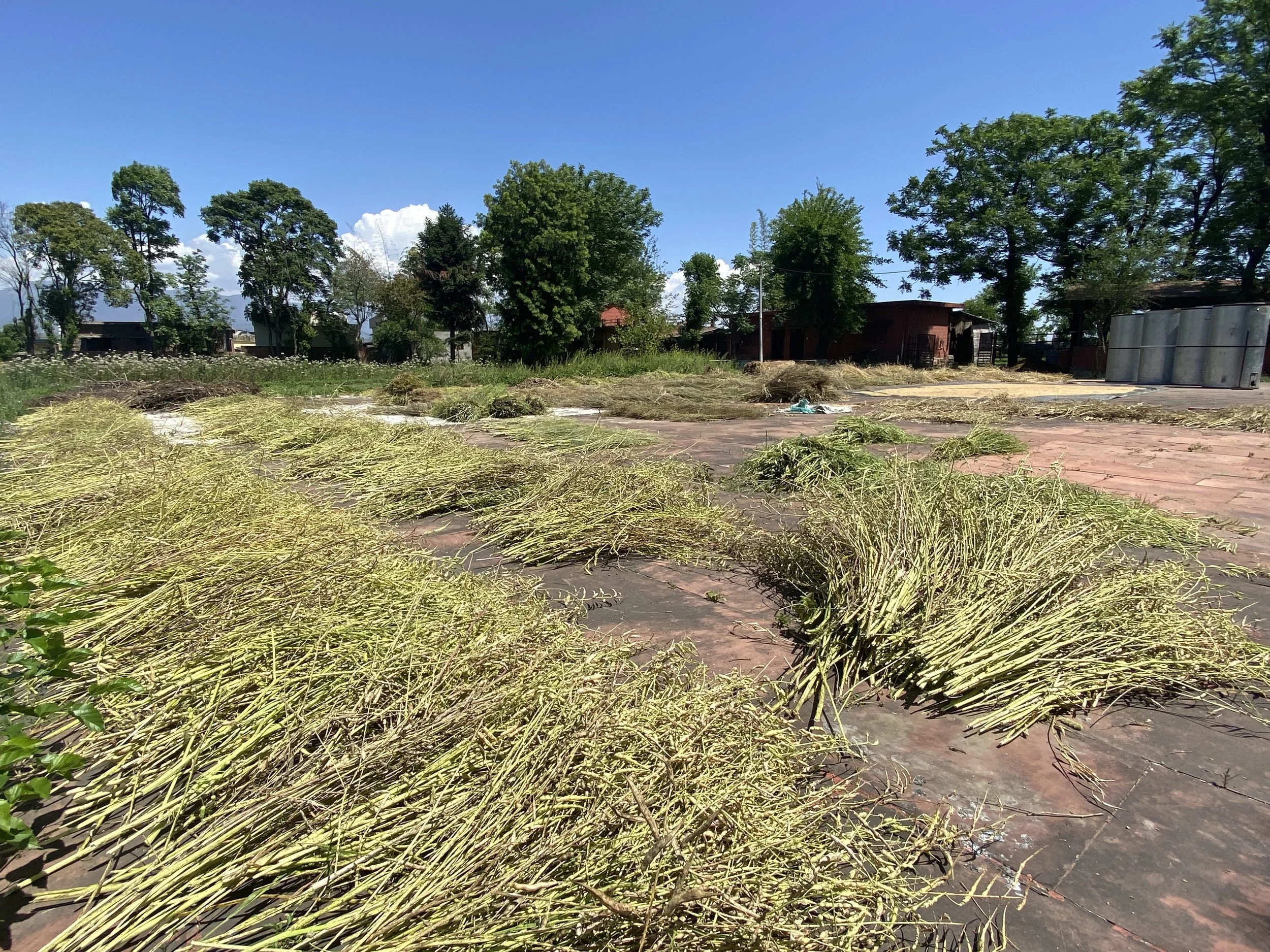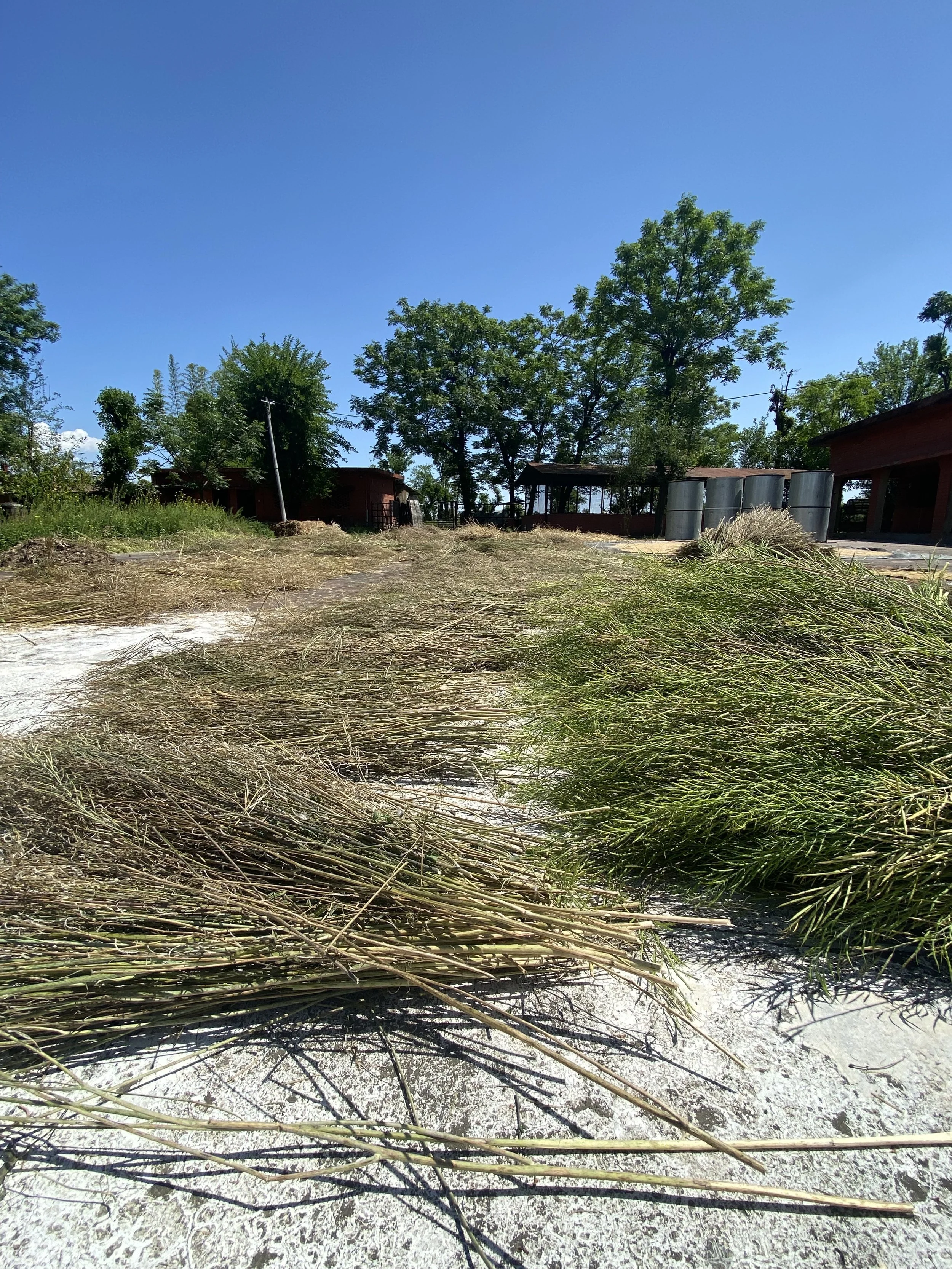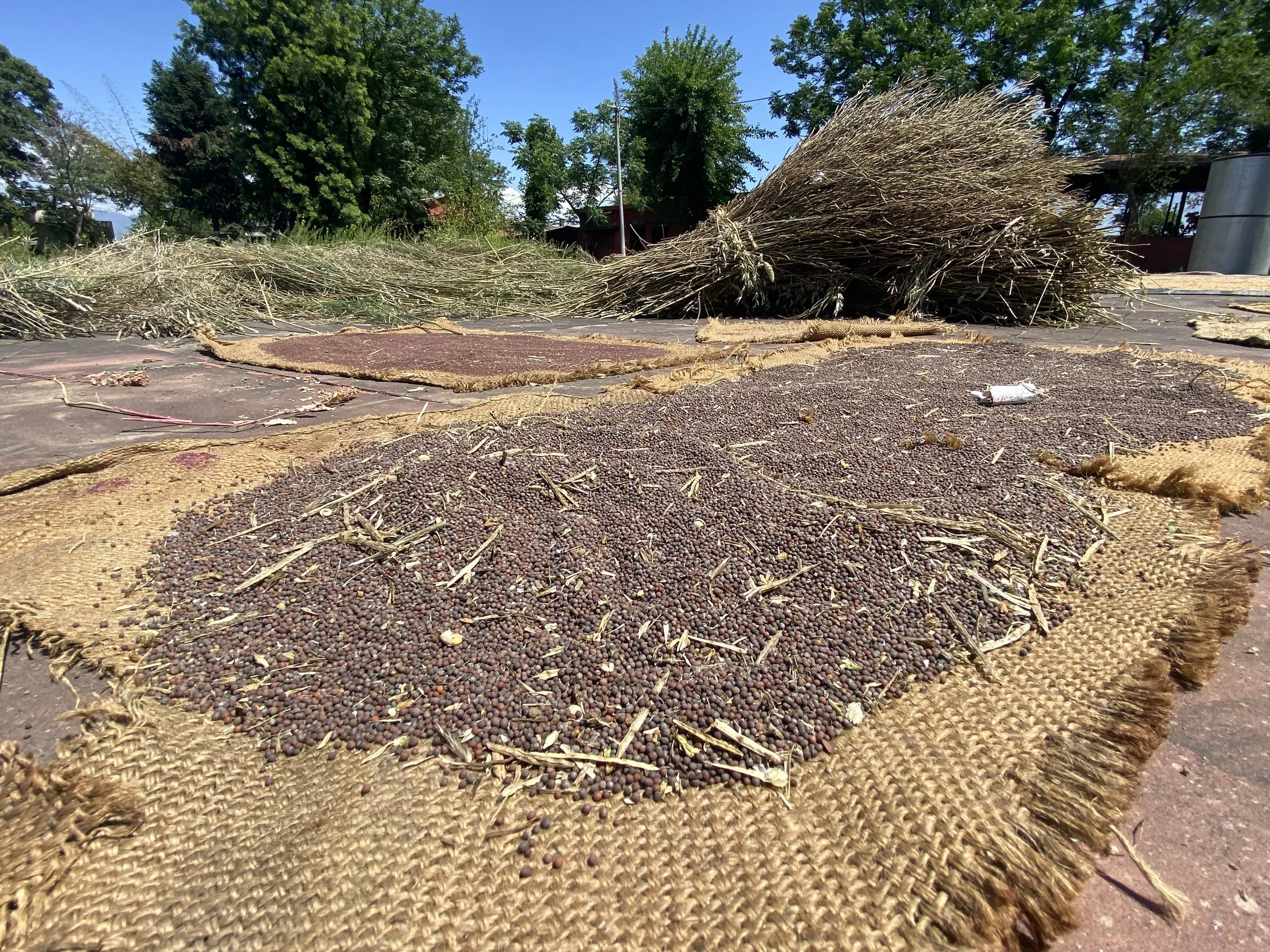Harvest Time
Harvest season is upon us.
The current dry season, or Rabi, is ending and the next season, Kharif aka monsoon season, begins in June. That means that what was planting at the beginning of the dry season is now ready for harvest! And that space will be made available to sow for the next season (most of which will be rice).
It’s quite different here than other farms I’ve been on as most of the farmland is used for seed conservation – so most of what is growing is intentionally allowed to go to seed. This is so that the seeds can be harvested, dried, saved, then both distributed to farmers in their networks (or other farmers in need) and replanted the next season to continue the saving process.
Instead of harvesting the mustard greens or radish from the soil, we’re harvesting the seed pods from those crops, which form and ripen much past the prime of the crop. The crop is then left in the soil for its nutrients to be recycled with the soil microbes.
Lately, we’ve been harvesting radish, mustard, quinoa, a few spices (fenugreek and coriander seed), barley, oats, and some peas.
There are MANY varieties of each crop growing here —232 varieties of wheat, 30 varieties of yellow mustard and 19 varieties of brown mustard, 31 varieties of barley, 25 varieties of oats, 55 varieties of flax seed, and more. All are grown through mixed cropping, so even if there are multiple fields of wheat, oats and radish across many acres, the biodiversity is honored through the diversity of seed varieties used.
Harvesting looks a little bit like this:
We harvest the seed pods when ready using a tool called a “sickle” to cut the stalks of the plants mid length. They are gathered in bundles and carried to the drying platform at the back of the farm. We then harvest any plant material still left in the field, along with all wild clover and grasses that were growing with said crops and bundle those up to be ground & fed to the cows. With each harvest, we ensure to cut the plants at soil level, leaving the roots intact.
2. The harvested seed pods are laid out to dry for 3-5 days (or longer as needed)
3. They are then “threshed” or lightly hit with a wooden stick or other tool to break the seeds free from the pods. We separate the plant material from the seeds repeatedly with our hands until there is as little plant material left.
4. The seeds are then gathered and left to dry for more time, dependent on the seeds themselves, and cleaned again before ready for storage.
5. We gather all leftover plant material from threshing and sorting and again bundle it up to be fed to the cows!







